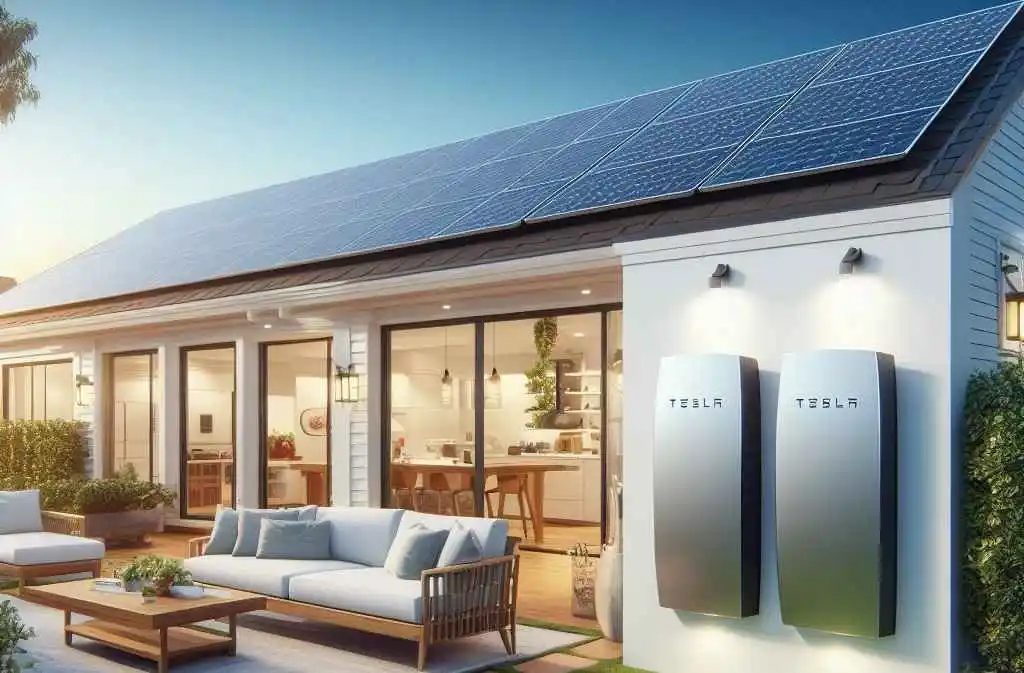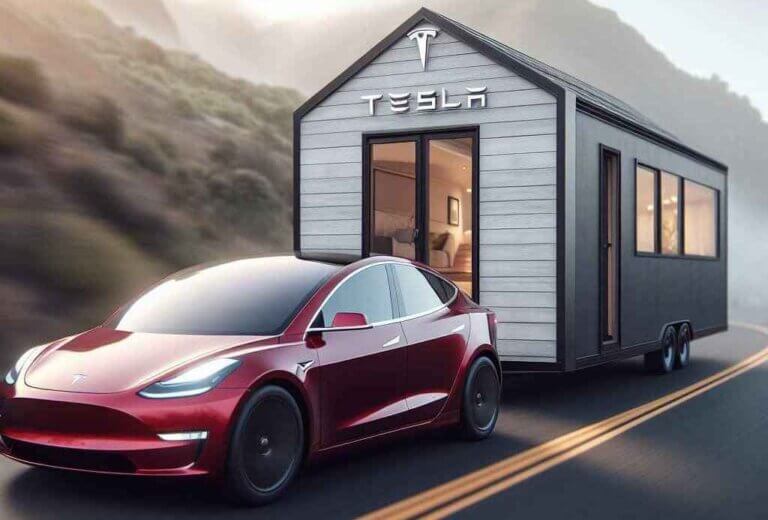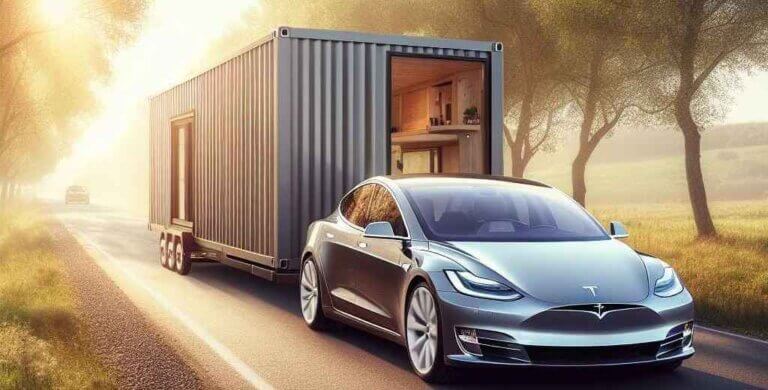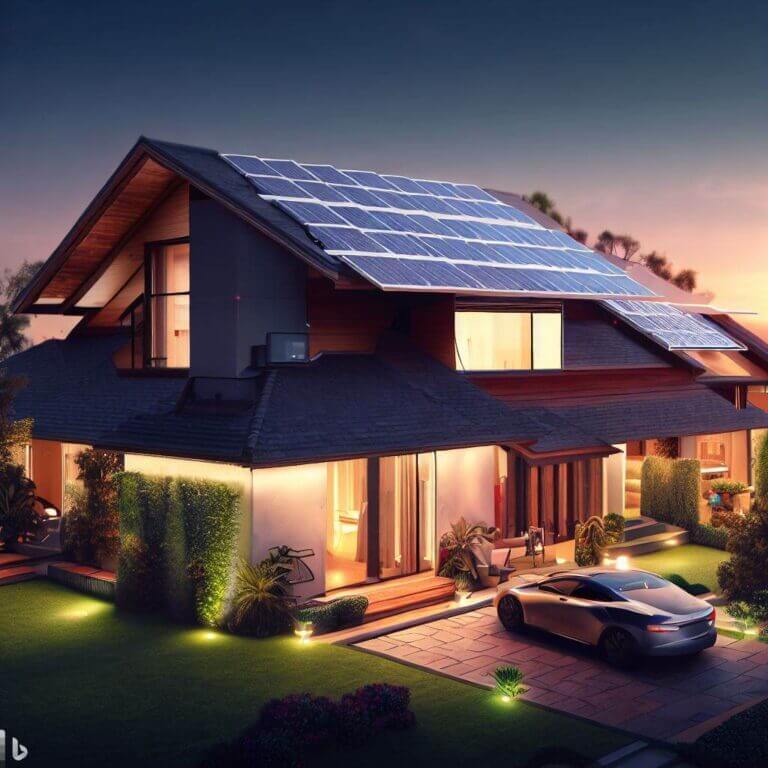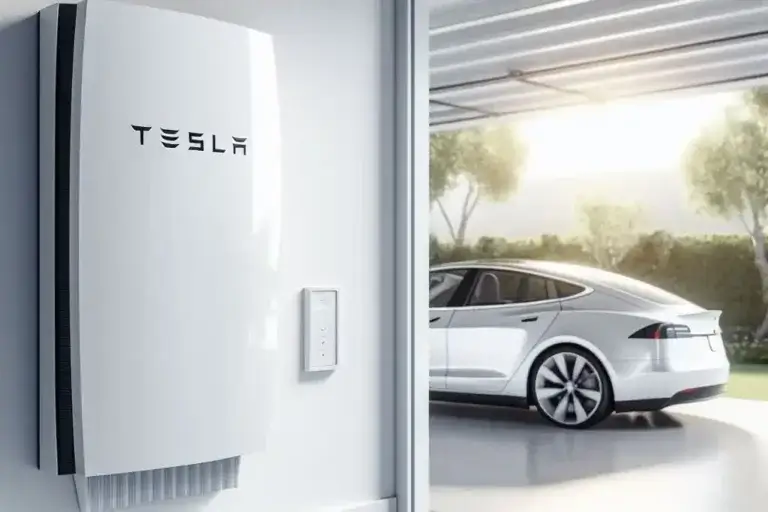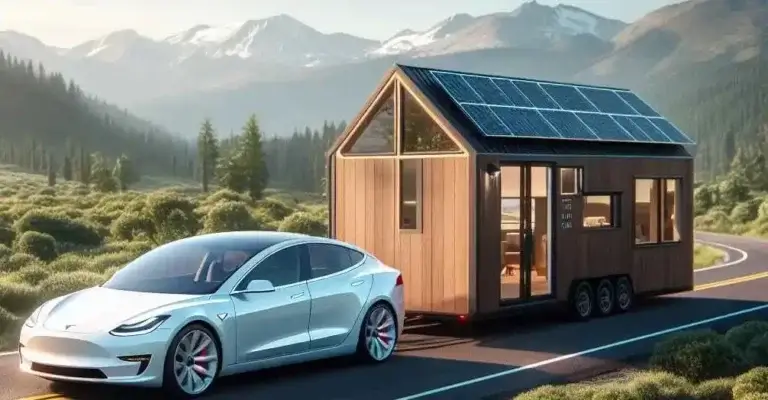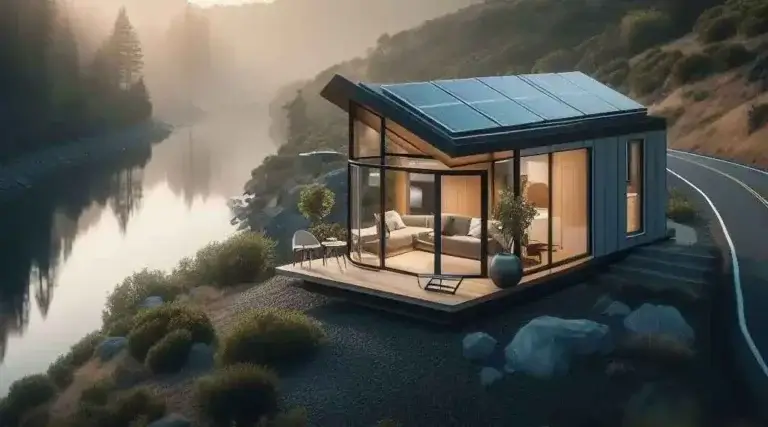Can Tesla Powerwall Be Used Off Grid? A Complete Guide on Powering Your Home with Tesla Batteries
Going off-grid with renewable energy is becoming an increasingly popular option for homeowners looking to take control of their energy usage and costs. The Tesla Powerwall, Tesla’s home battery pack, offers exciting possibilities for living off the grid by storing solar or wind energy. But can Tesla Powerwall actually be used in an off-grid solar system?
In this complete guide, we’ll cover everything you need to know about using Tesla Powerwall batteries off-grid, including:
- How Tesla Powerwall works for off-grid homes
- What’s needed for an off-grid Powerwall solar system
- Capabilities and limitations of off-grid Powerwall systems
- Costs of an off-grid Tesla Powerwall solar setup
- Pros and cons of off-grid Powerwall systems
- Examples of real-world off-grid Tesla Powerwall installations
- Steps for transitioning to off-grid living with Tesla batteries
- Tesla Powerwall off-grid FAQs
Plus plenty more on powering your home with Tesla’s game-changing home energy storage!
How Does Tesla Powerwall Work Off-Grid?
The Tesla Powerwall is primarily designed to be used as a solar battery alongside grid-connected solar panels. But it can also be used completely off-grid along with solar panels and supporting equipment to provide renewable backup power or even full-time energy autonomy.
Here’s a quick overview of how off-grid Tesla Powerwall systems work:
- Solar panels charge the Powerwall batteries during the daytime
- The Powerwall system powers your home’s electrical needs, prioritizing solar power when available
- When solar production drops, the Powerwall discharges stored energy to continue powering your home
- During extended poor weather or high usage times, a generator can provide supplemental charging
- The system is monitored and controlled through the user-friendly Tesla app
So with the right solar equipment and setup, Tesla Powerwall batteries can provide reliable green energy for off-grid homes.
What’s Needed for an Off-Grid Tesla Powerwall Solar System?
While Tesla Powerwall is capable of operating off-grid, you can’t simply install it on your home and expect to leave the grid. An entire off-grid solar and energy storage system needs to be properly designed and installed.
Here are the main components needed for a fully off-grid Tesla Powerwall system:
Solar Panels
Solar panels are essential for charging your Powerwall batteries using renewable energy from the sun. The size of your solar array will depend on factors like your location’s solar resource, power needs, and budget. More panels means more daily charging capacity for overcast periods.
Mounting Equipment
Proper roof mounts, racks, wiring, and weatherproof housings are needed for safe, durable solar panel installations.
Inverter
A solar inverter converts the solar panels’ DC output into usable AC electricity for powering home appliances and devices. Grid-tied inverters won’t work off-grid – you need an off-grid specific model.
Generator (Optional)
While not strictly necessary, a backup generator provides supplemental charging during extended poor weather when solar production drops off. This prevents the batteries from being depleted entirely.
Battery Bank
The Tesla Powerwall battery system serves as the energy storage bank. Off-grid installations typically employ multiple Powerwall batteries for increased capacity, often wiring two or more together.
Battery Inverter
The battery inverter converts DC current from the Tesla Powerwall bank into AC power for your home’s usage. It also helps manage the entire system.
Critical Loads Subpanel
This dedicated electrical panel and wiring system serves critical backup loads only, separate from the main electrical panel. This enables power prioritization during an outage.
Home Energy Monitoring
The Tesla app or an additional energy monitor lets homeowners view system data like solar production, battery charge levels, and current home power usage in real time.
When all of these components are properly integrated and installed, the Tesla Powerwall batteries can provide renewable off-grid energy for your home!
What are the Capabilities and Limitations of Off-Grid Powerwalls?
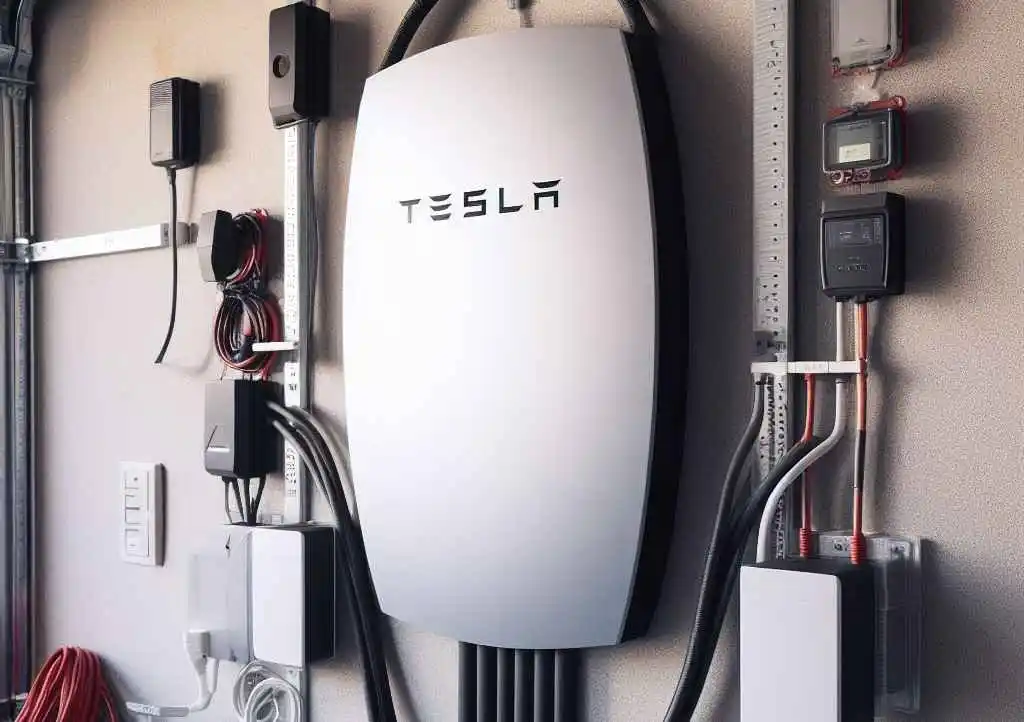
Tesla’s Powerwall home batteries offer exciting off-grid energy capabilities, but also have some limitations to be aware of.
Capabilities:
- Solar energy time shifting from daytime to nighttime
- Backup power during grid outages
- Reduced reliance on fossil fuel generators
- Monitoring and control from your smartphone
- Stackable battery capacity as needed
- High efficiency DC-to-AC conversion
However:
Limitations:
- Battery capacity is still finite (13.5 kWh per Powerwall 2)
- May still need propane/natural gas for heating appliances
- Not suitable as a primary power source for high energy-draw appliances like electric stove/oven ranges, electric water heaters, electric HVAC systems without using multiple Powerwalls
- Periodic generator charging likely required during prolonged bad weather stretches
While off-grid Powerwall systems have a lot to offer, they cannot entirely replace the consistent energy capacity of being grid connected, at least not without significant solar panels and several home battery packs.
Understanding both the incredible off-grid potential along with realistic capacity limitations helps set proper expectations of living off-grid with Tesla batteries.
What Does an Off-Grid Tesla Powerwall Solar System Cost?
Off-grid renewable energy systems require significant upfront investment. A Tesla Powerwall-based setup brings the combined costs of solar panels, batteries, supporting equipment, and professional installation.
According to Tesla, a Powerwall battery cost around $7,500 per unit (13.5 kWh capacity). Most experts recommend at least two to three Powerwalls for adequate off-grid home energy storage.
So for the batteries alone, expect to invest around $15,000 to $22,500. Then factor in:
- Solar panels: $10,000 to $30,000+
- Inverters, racking, etc: $2,000 to $5,000
- Installation costs: $5,000 to $15,000
In total, a properly-sized off-grid Tesla Powerwall solar system typically ranges from $35,000 to $75,000+ installed.
While not inexpensive, this significant investment can yield years of renewable energy independence and peace of mind. Maintenance costs are also low compared to grid electricity bills and generator fuel costs.
Financial incentives like solar tax credits can offset some of the upfront costs as well. The long-term savings combined with environmental benefits often make the investment worthwhile for many homeowners.
Pros and Cons of Using Tesla Powerwall Batteries Off-Grid
Deciding whether to take your home off-grid with Tesla battery packs brings considerable pros alongside a few potential drawbacks to weigh:
Pros
- Reduce or eliminate electric bills
- Clean solar energy reduces grid dependence
- Backup power security whenever needed
- Use solar even when grid is down
- App monitoring and automation capabilities
- Low maintenance costs over time
- Increased home resale value
- Eligible for tax credits and incentives
Cons
- High upfront investment cost
- Permanent grid disconnection not reversible
- Home remodeling challenges if needed
- Responsible for full system maintenance
- Outdoor aesthetic changes from solar panels
- Potential HOA solar panel restrictions
As with any major home improvement project, carefully considering both the short and long-term pros and cons helps ensure off-grid Powerwalls meet your home’s unique needs and limitations.
While using Tesla batteries off-grid requires commitment and responsibility, many homeowners find the benefits well worth it!
Real-World Off-Grid Tesla Powerwall Installations
Wondering what off-grid Powerwall systems actually look like once installed?
Here are a few real-world examples showcasing how homeowners are using Tesla battery packs to go off the grid:
Off-Grid Cabin Powered by used Tesla Batteries
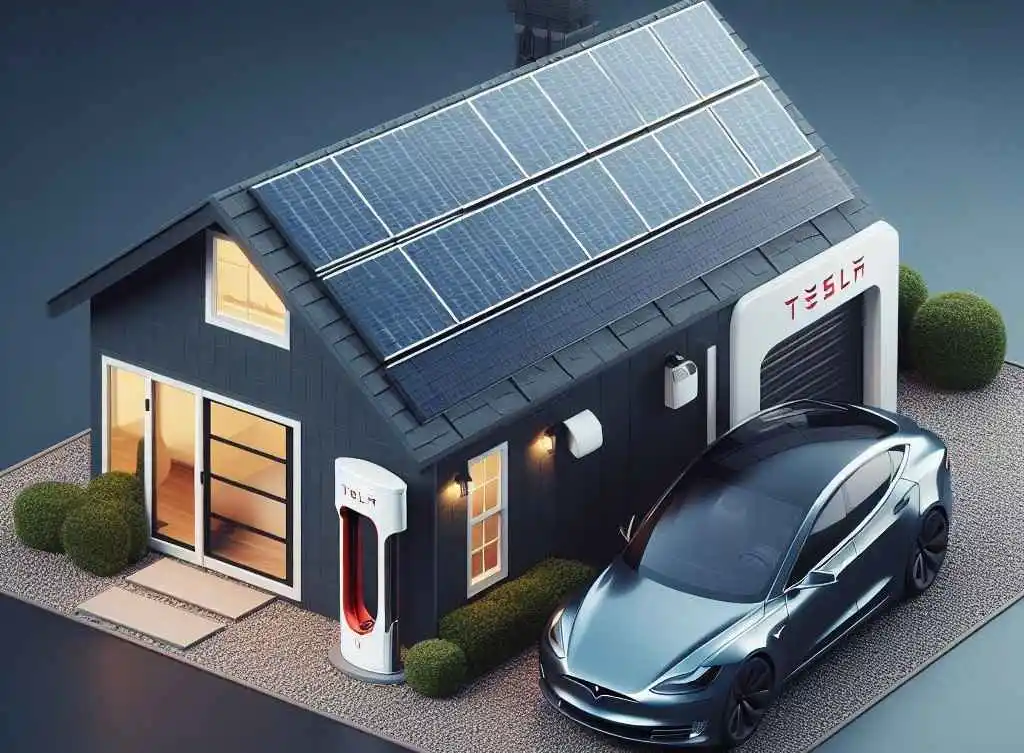
Michael, an off-grid solar enthusiast based in California, created an off-grid system using recycled Powerwall 1 batteries for his small cabin. He uses wind and solar to charge eight total Tesla battery modules.
This used Tesla battery bank provides essential overnight and backup power security. Michael notes how the modular Powerwall packs provide flexibility to right-size his needs.
Family Home’s Solar + Multiple Powerwalls
This family decided to take their suburban home completely off-grid. Their setup uses pole-mounted solar to charge a bank of 14 Tesla Powerwall batteries!
During sunny days, the 35 kW solar array generates excess power. This charges the large Powerwall capacity for nighttime usage and any extended overcast periods.
Living off-grid for over a year now, the homeowners enjoy zero energy bills while maintaining reliable home electricity.
Northern Off-Grid Solar Cabin
Another DIY off-gridder created this remote solar cabin designed to withstand harsh northern Minnesota winters.
He explains the essential role of four Tesla Powerwalls providing the needed battery capacity to capture sufficient summer solar for winter usage. It takes advantage of seasonal solar differences rather than overbuilding panels.
He highlights how Powerwall automation shifts solar energy to align with usage needs in an affordable off-grid solar setup.
Island Grid Backup Using Tesla Batteries
When the small Caribbean island of Ta’u suffered frequent power outages from its diesel generators, Tesla batteries provided the solution.
Over 6 megawatt-hours of Powerpacks now integrate solar, generators and existing batteries to sustain the entire island. This resilient microgrid now provides 24/7 clean reliable electricity.
So while not a home installation, this impressive large-scale example displays how Tesla batteries enable transitions to renewable energy.
These real-world cases prove that with proper planning and installation, Tesla Powerwall systems can serve either partial or complete off-grid solar needs!
Steps for Transitioning to Off-Grid Living Using Tesla Batteries
Once you decide that an off-grid Tesla Powerwall system meets your residential needs, turning this vision into reality takes careful planning and execution across 8 key steps:
1. Calculate electrical loads – Determine typical and peak power draws across all home systems to properly size the batteries, solar panels and inverters.
2. Design solar + storage system – Work with an experienced installer to design a custom integrated setup meeting your unique power requirements.
3. Select equipment – Choose quality solar panels, mounts, cabling and Powerwall battery capacity along with all safety and monitoring gear needed.
4. Permitting & approvals – Secure all necessary electrical, building and local permits before proceeding.
5. Professional installation – Hire a licensed solar contractor for safe, effective system installation and activation.
6. Local utility grid disconnection – Formally notify your electric company before switching to off-grid renewable energy.
7. System optimization & adjustments – Fine-tune equipment and settings for maximum performance after a break-in period.
8. Ongoing maintenance – Perform periodic inspections and maintenance as-needed to sustain optimal function.
While not quick or easy, methodically completing these essential steps helps establish a smoothly operating off-grid Powerwall system powering your home successfully!
Frequently Asked Questions About Off-Grid Tesla Powerwalls
Here we answer some of the most common questions homeowners have about going off-grid using Tesla’s home battery systems:
Can a Tesla Powerwall fully power my home off-grid?
A single Powerwall cannot power most full-sized homes alone off-grid. Multiple battery packs are typically required, along with properly-sized solar panels and equipment. Small homes and cabins may run on one Powerwall depending on electrical loads and solar input.
Do I need a generator for off-grid Powerwalls?
Backup generators aren’t strictly required but are highly recommended for off-grid Powerwall systems. They provide supplemental charging during prolonged cold, cloudy and rainy periods to prevent battery depletion.
How long do off-grid Powerwall batteries last?
Tesla warrants Powerwall batteries for 10 years. However, they are designed to outlast this duration. Many factors affect overall battery lifespan, but generally 15-20 years of usable capacity or more is reasonable when properly maintained.
Can I take an existing grid-tied solar system off-grid?
Maybe, but would require extensive modifications. Grid-tied systems use different inverters, lack battery banks, and control priorities unsuitable for off-grid usage. Often more cost effective to start fresh.
What’s the difference between Powerwall and Powerwall+?
Beyond battery upgrades, the Powerwall+ version adds coordinated solar inverter capabilities for streamlined installations. However for off-grid usage, standalone solar inverters are still required regardless.
Can I size batteries first then add solar panels later?
Yes, modular Powerwall capacity can certainly be installed first, just leaving room to integrate proper solar sizing later. However you’ll need temporary generator charging before adding solar. Best to plan complete system needs upfront.
Hopefully these common questions and answers help provide further clarity regarding realistically applying Tesla Powerwall batteries in off-grid renewable energy systems. Reach out for any other specific Powerwall or solar inquiries!
Key Takeaways on Using Tesla Powerwall Batteries Off-the-Grid
- Multiple Powerwall battery units plus adequately-sized solar panels and equipment are required for whole-home installations
- Backup generators provide supplemental charging during prolonged bad weather stretches
- Carefully calculating your home’s electrical loads determines proper system component sizing
- Work with an experienced designer/installer knowledgeable in off-grid integration
- budgets typically range from $35,000 to $75,000+ for a full off-grid Powerwall solar system
- Off-grid living requires energy awareness and responsibility but yields renewable independence!
While outfitting your home with off-grid renewable energy capabilities requires significant commitment and investment, Tesla Powerwall and solar technology now make this dream more accessible than ever!
Conclusion – Start Your Off-Grid Journey with Tesla Powerwall
Transitioning fully off the traditional electrical grid remains a major endeavor – technically, financially and philosophically. Homeowners must carefully weigh the pros and cons to decide if living off-grid meets their needs and expectations.
But for an increasing number of environmentally-conscious households seeking energy independence, Tesla’s Powerwall batteries make achieving this goal more viable than ever before.
The move towards decentralized renewable energy aims to empower homeowners while reducing reliance on fossil fuels. Tesla’s solar and battery innovations provide essential technology supporting this transformation.
No longer needing to wait helplessly during power outages or curtailing solar usage at night, Powerwall systems offer newfound control along with backup assurance. And solar power synergistically charges your home batteries, bringing you closer to 100% self-sufficiency.
While proper sizing considerations exist and overall costs run high, families successfully living off-grid reinforce this concept’s life-changing potential. With batteries now eliminating solar energy’s former intermittency, embracing a self-sufficient lifestyle can fulfill both pragmatic and philosophical motivations.
So if you’re currently weighing a move towards off-grid living, Tesla Powerwall and solar technology may help turn aspirations into reality. Start exploring what a custom-designed renewable backup or complete energy independence system could look like for your unique home needs.
Empower yourself while shrinking your environmental footprint for a win-win through cleaner and more reliable residential energy solutions. The off-grid future beckons – Tesla Powerwall awaits!

